The Inca Empire did not exist in a vacuum. As their Empire grew, the Inca conquered and incorporated other kingdoms until theirs was the largest empire in the Americas.
Gemma Noon, BA (hons) Archaeology, MA Information & Library Mgmt.
Source - https://www.thecollector.com/civilization-conquered-inca-empire/
The Inca were not the only culture to exist in South America between 1000 CE and 1500 CE. Over the centuries, they encountered, conquered, and incorporated other kingdoms into their own until their empire, called Tawantinsuyu or the “Land of the Four Corners,” stretched over 2,500 miles down the coast of South America and ruled over an estimated 12 million people.
Despite their reputation as a fearsome warrior culture, the Inca were not particularly warlike nor militaristic, although they were not afraid of using force. The Inca saw war as an expensive waste of people and resources. So, when they encountered other kingdoms or cultures, they would first try diplomacy and bribery to win people over to their cause. If that did not work, then merciless warfare, complete with the sacrifice and flaying of enemy leaders, would usually convince these peoples to join them after all. Here are five of the many kingdoms that were absorbed by the powerful Inca prior to the arrival of the Spanish Conquistadors.
1. The Chincha: A South American Civilization Conquered by the Inca Empire
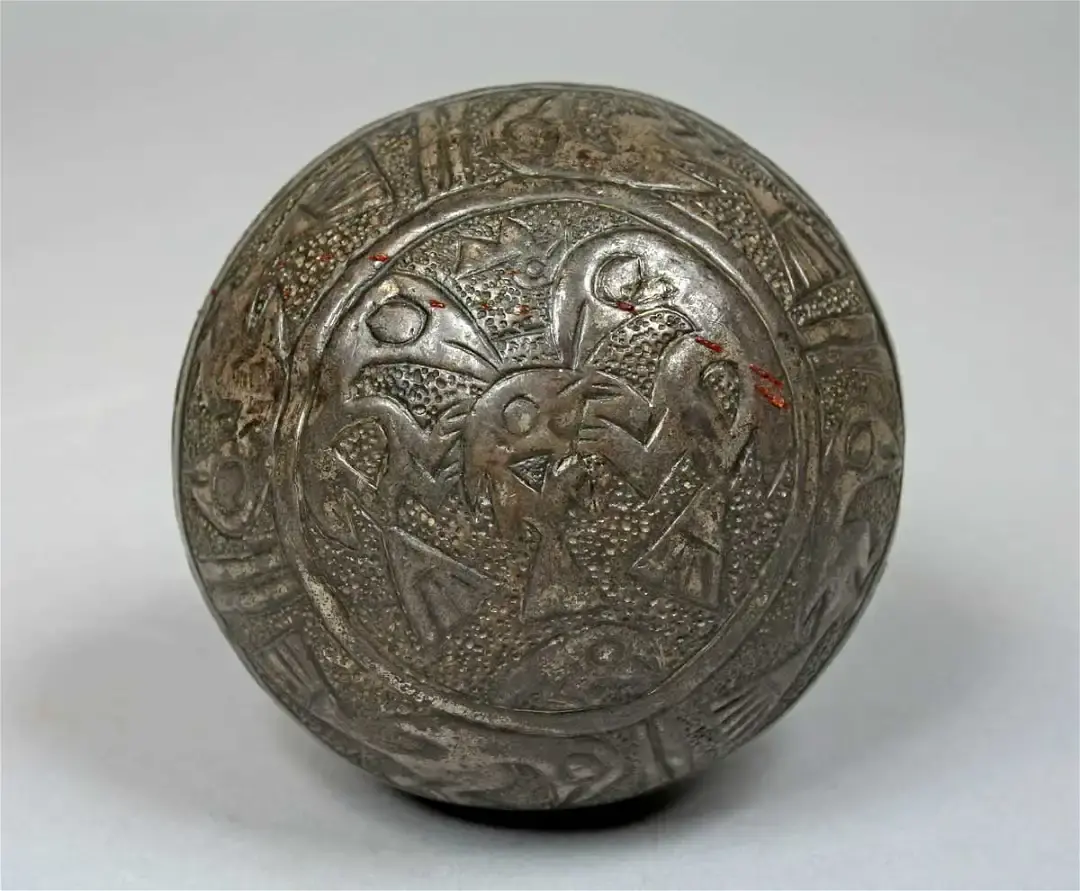
Embossed metal ball sculpture, believed to belong to the pre-Inca Chincha culture, via The Metropolitan Museum
Centered around the site now known as La Centinela, the Chincha kingdom probably formed in the 13th to 14th century CE, although the lack of written history makes it difficult to know the exact dates of their rise. What is known for sure, however, is that the Chincha kingdom was rich and wealthy both prior to and during their time in the Inca empire. It is thought that the two cultures first came into contact around 1440 CE, with the Chincha absorbed fully into the Inca empire in 1476 CE. It is thought that the Chincha were a highly organized society with their people grouped by their skills and specialisms, such as merchants, fishermen, and silversmiths. They may even have lived in settlements or areas of the cities based on their role in Chincha society as part of their complex political hierarchy.
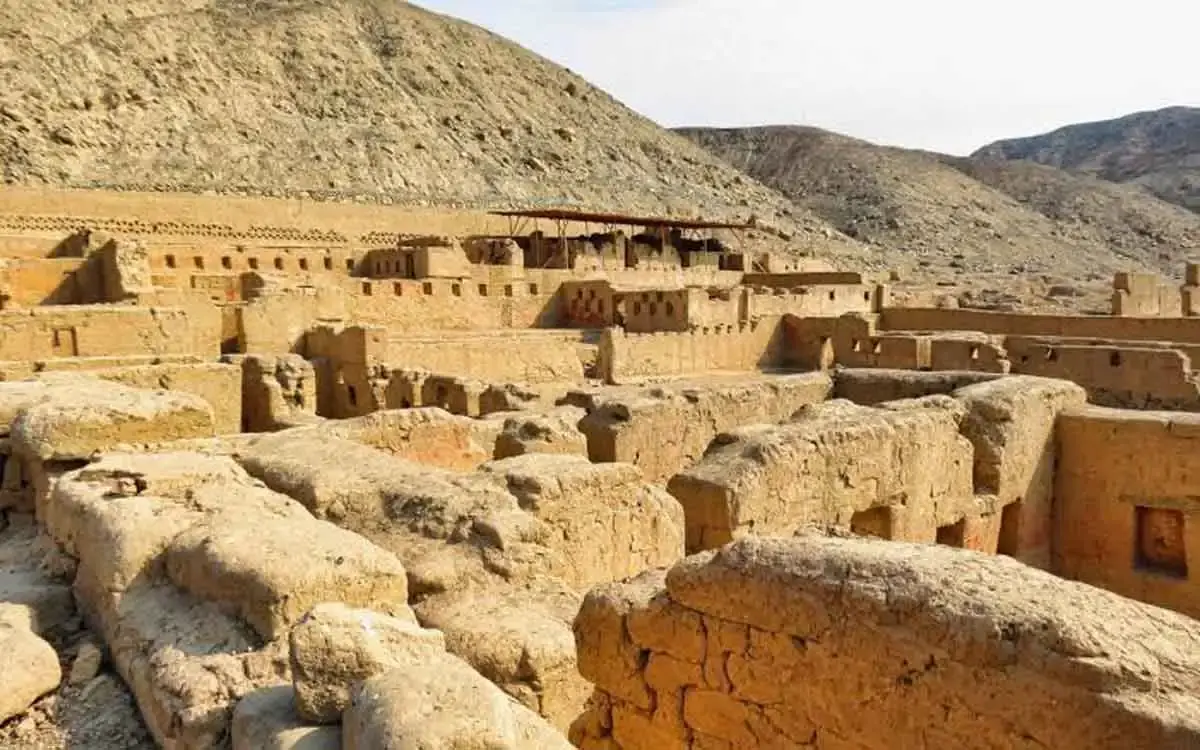 Chincha ruins of la Centinela, via ICA Peru
Chincha ruins of la Centinela, via ICA Peru
The absorption of the Chincha into the Inca empire seems to have been a peaceful process, where the Inca gradually took over the political and social power of the kingdom. This is evidenced by the archaeology of Chincha sites. There is evidence of the Inca ceremonial constructions like Tambo Colorado, built in collaboration with local Chincha builders, that is thought to have been built in a spirit of collaboration rather than subjugation.
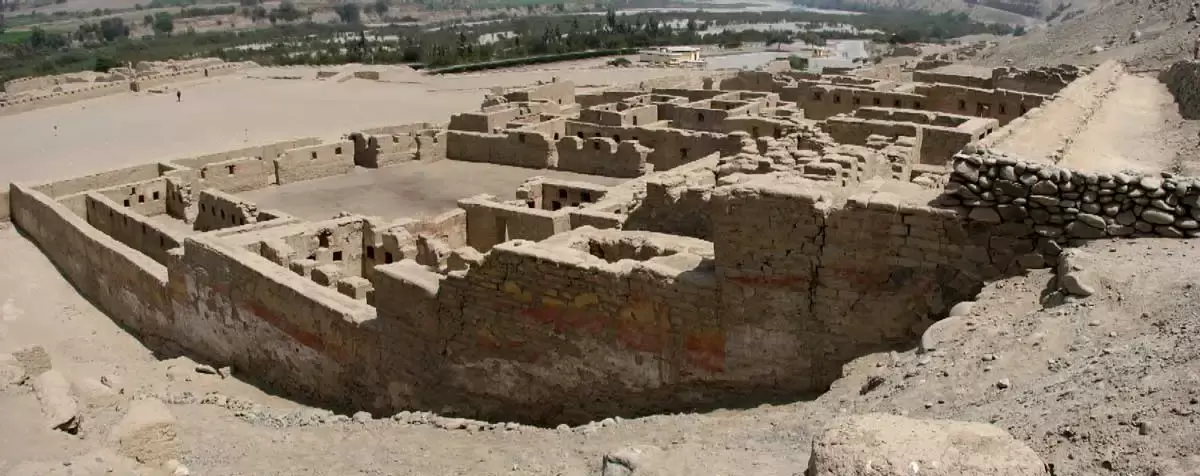 Tamba Colorado, a Chincha-Inca palace, via Wikimedia Commons
Tamba Colorado, a Chincha-Inca palace, via Wikimedia Commons
However, it very much seems that the Inca were the dominant/senior partners in the relationship. For example, in these palace structures, color is used to determine who can enter each area, and it is evident that while the Inca could go anywhere, the Chincha leadership’s access was restricted.
Ultimately, the Chincha became nothing but a vassal state of the Inca. They adopted the culture and ways of their new masters, but continued to enjoy wealth and stability as a result.
2. The Chanka
 Sondor Archaeological site, once a Chanka stronghold, via Wikimedia Commons
Sondor Archaeological site, once a Chanka stronghold, via Wikimedia Commons
While the Chincha seem to have voluntarily joined the Inca Empire, that was not true for all of their other neighbors. According to legends written down by the later Conquistadors, the Chanka were responsible for the creation of the Inca empire. The story goes that the powerful, warlike Chanka had been expanding their power for several years. However, in 1438 CE, they attacked the Inca capital of Cuzco, causing the then King and his eldest son to flee. His youngest son, prince Cusi Yupanki, held his ground and inspired other Inca to do the same. Not only did they defeat the invading forces of the Chanka, but they also turned the tables, conquering them instead. The young prince became the legendary Pachakutiq Inka Yupanki or Emperor Pachacuti.
But is this account truthful? Unfortunately, many of the South American cultures, including the Chanka, have not been well studied by archaeologists and historians. However, what has been unearthed at their sites seems to tell a different story than the one the Inca told to the Spanish 150 years later.
The Chanka Kingdom grew from the remnants of the collapsed Huari culture from around 1100 CE to their peak around 1400 CE. Many of their settlements were based in what is now the Andahuaylas province of Peru. Several large settlements have been identified and demonstrate much of the same sophisticated architecture as their ancestors, the Huari, had developed, although it is clear that they prioritized defensible positions over access to resources, such as water. Chanka women had considerably more rights than those in most contemporary societies, including those in Europe. They had the right to hold ownership over land, possessions, and money and did not have to hand it over to the control of male relatives.
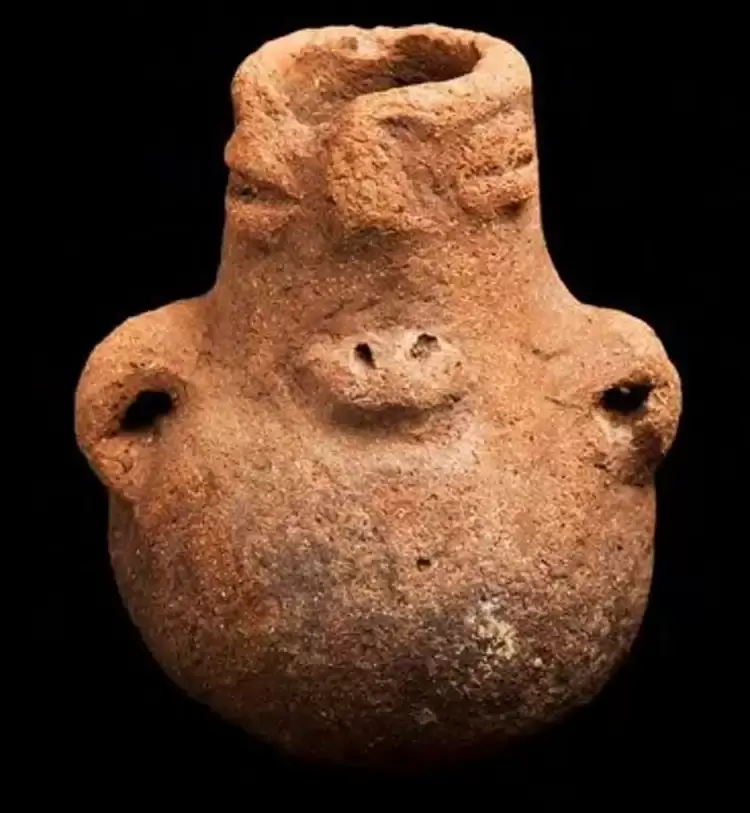 Chanka Miniature Pitcher, via Peru LNG Project
Chanka Miniature Pitcher, via Peru LNG Project
While it seems probable that the Chanka were a dominant culture in the area and had been for several hundred years before the rise of the Inca, the data suggests that they had no central ruler or political structure but were rather organized as a series of competing chiefdoms that were often caught up fighting among themselves. This left them vulnerable to attack from the unified Inca, who could turn them against each other in a successful divide-and-conquer strategy.
Whether the Chanka attacked the Inca first or the Inca revised history to make themselves look better will never really be known. However, it does seem that the Chanka, like their neighboring kingdoms, the Lupaka and the Colla, were probably not as advanced or unified as the Inca histories would have us believe. There is not any evidence of highly stratified or unified cultures, and although it is possible that a short-term coalition formed within the Chanka led to an invasion, there’s no archaeological evidence of this to date.
3. The Lupaca & the Colla
 Monument at Lupaqa capital of Chucuito taken, via Wikimedia Commons
Monument at Lupaqa capital of Chucuito taken, via Wikimedia Commons
It is once again thanks to the Inca’s own mythology, that we know anything about the Lupaca and Colla peoples. Yet, as with the Chanka, the archaeology does not always match the accounts written down by the Conquistadors, nor have these two cultures received as much attention as they deserve.
After the fall of Tiwanaku, their empire split itself into a number of different states, collectively known as the Aymara kingdoms, of which Lupaca was one of the most powerful. Located in what is now Puno, Peru, to the southwest of Lake Titicaca, it is believed that their capital was in Chiquito.
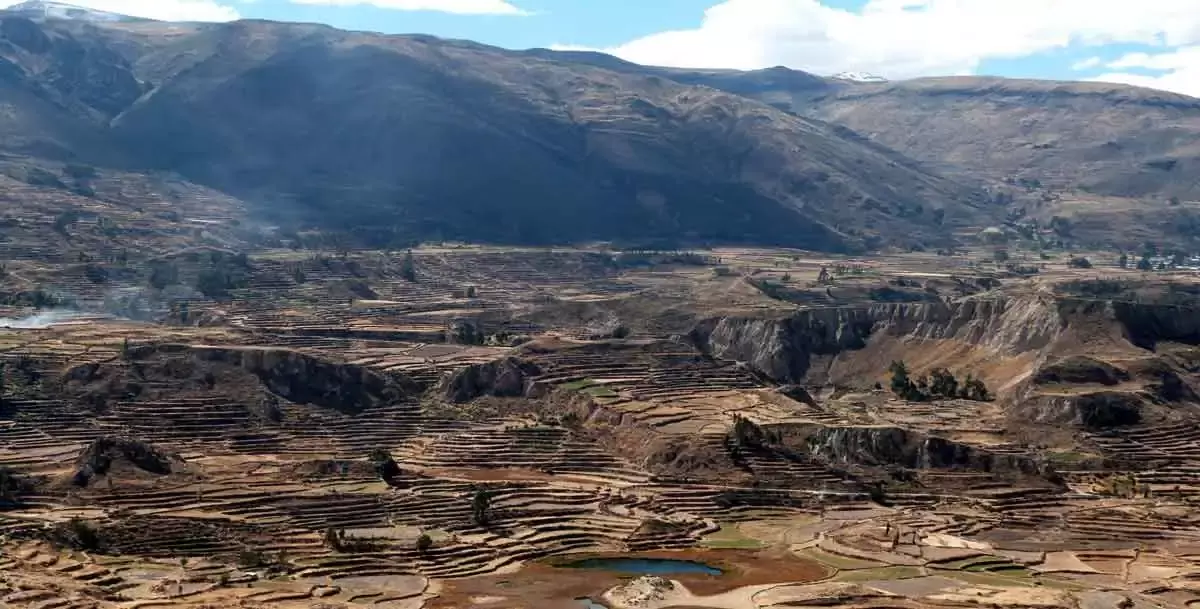 Terraced agricultural systems from the Colca Valley, Peru, via CulturAndes
Terraced agricultural systems from the Colca Valley, Peru, via CulturAndes
The Lupaca are thought to have been behind the development of the famous terraces and vertical agriculture that the Inca would later implement to feed their empire. They managed their kingdom through a tiered social model with a series of feudal overlords who oversaw smaller chiefdom villages or cacaberas. These groups were not truly unified, however, and there seemed to have been long periods of warfare both between individual Lupaqa cities as well as against rival kingdoms, such as the Colla.
 Sayaqmarka ruins on the Machu Pichu Trail, thought to have been built by the Colla taken, by via Flickr/ Anthony tog lee
Sayaqmarka ruins on the Machu Pichu Trail, thought to have been built by the Colla taken, by via Flickr/ Anthony tog lee
Inca oral traditions frame the Colla, in particular, as a warlike people, implying that their subjugation was essential to the survival of the Inca. Certainly, the Colla appear to have lived in fortified settlements and hillforts called Pukara, and archaeological excavations have likewise found evidence of warfare. The Inca considered them to be a powerful people alongside the Lupaqa, with whom they seem to have been in sporadic conflict. Despite this, they were also talented agriculturalists and architects, and like the Lupaqua, they utilized the terrace system to grow food to feed their people. They raised valuable llamas on their lush lands and had access to many natural resources that they could exploit.
Whether the Inca were being truthful about the threat from the Colla or whether they attacked first in a bid to take control of the rich lands of their neighbors, the Inca and Colla did come into conflict during the reign of Pachakutiq Inka Yupanki. It appears that the Inca took advantage of the hostilities between the different kingdoms around lake Titicaca and allied with the Lupaca The latter seem to have been absorbed into their empire in much the same way as the Chincha were. However, they chose to destroy the Colla with military force before bringing them under Inka rule, followed quickly by the rest of the neighboring small kingdoms.
4. The Chimú
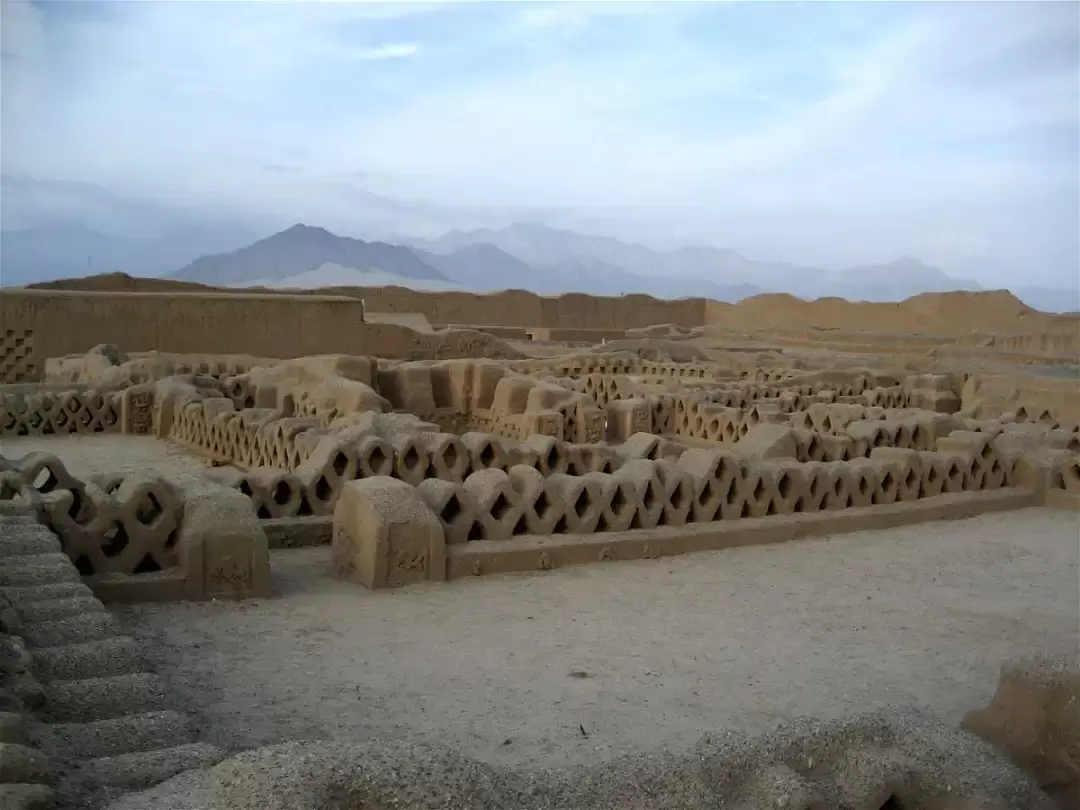 Chan Chan Archaeological Zone (Peru), by Jim Williams, via UNESCO
Chan Chan Archaeological Zone (Peru), by Jim Williams, via UNESCO
The Chimú Empire was founded around 900 CE, almost five hundred years before the Inca came to power, slowly rising to prominence as the earlier kingdoms of Tiwanaku and the Huari faded from the archaeological record far to the south. They inherited the lands that once belonged to the Moche people (TC LINK to 4490 Civilizations Before Inca), and occupied a number of their sites.
The Chimu empire was the largest and most sophisticated civilization in South America prior to the Inca and was located on the Northwestern coast of modern-day Peru. From their capital at Chan Chan, they operated on a rigid social structure with a Divine Emperor at the top, and then a class system extending below him.
Like in many of the South American empires, food production and agriculture was of prime concern for the Chimú, who built the longest and most complex system of irrigation canals ever seen in South America for the purpose of bringing water to their field network. A similarly complex system of administration and governance oversaw the collection and redistribution of goods among the Chimú, and while archaeology shows that even the poorest in their society were well-fed, luxury goods were certainly concentrated in the hands of the elite.
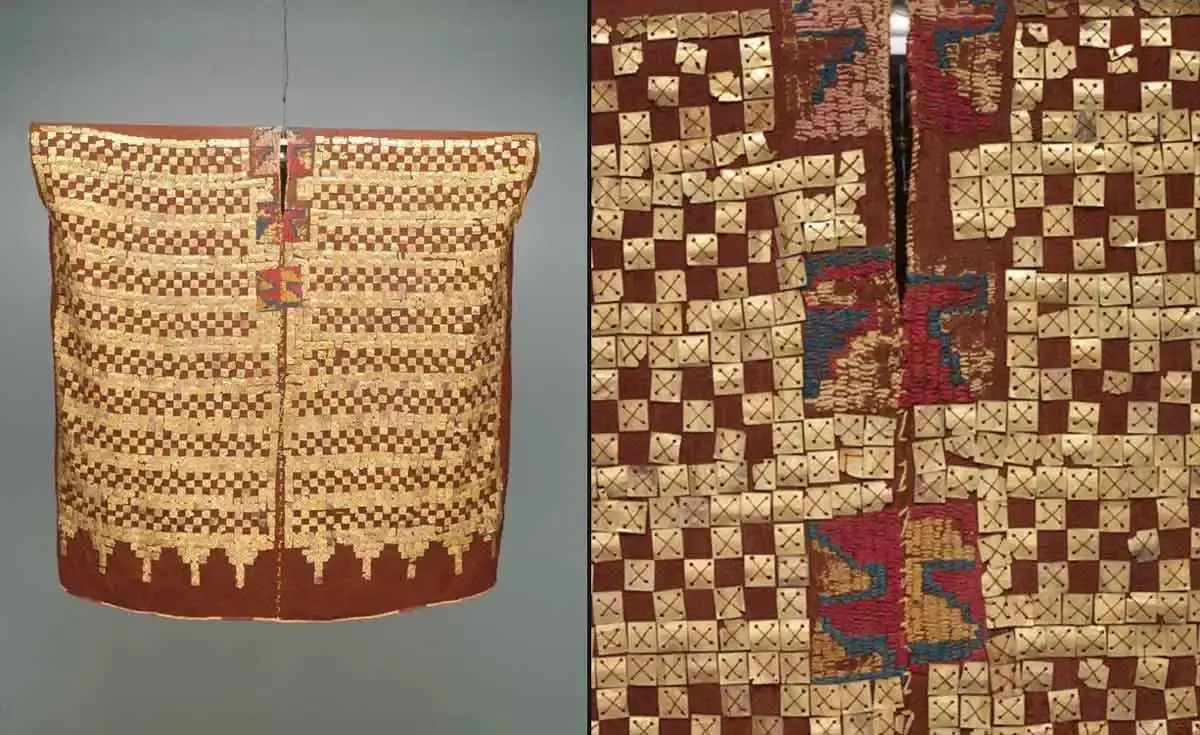 Chimu tunic with gold squares, via Dallas Museum of Art
Chimu tunic with gold squares, via Dallas Museum of Art
The Chimu prized art highly, and while they were certainly influenced by the earlier Huari and Moche civilizations, they developed this style still further and created artistic details that affect a recognizable part of Andean art to this day. Their textiles, many of which have survived thanks to the climate, include open-armed rulers in elaborate headdresses, and a double-headed “rainbow” snake is a popular design. Most notably, however, these textiles are sometimes lavishly embellished with bright beads and metal detailing, with one incredible tunic including over 7,000 squares of pure gold sewn into the fabric (image above). The artisans occupied an important role in Chimú society, and there are examples of sculpture, wood carving, silver and gold working, as well as more regional work such as carved and inlaid spondylus shells.
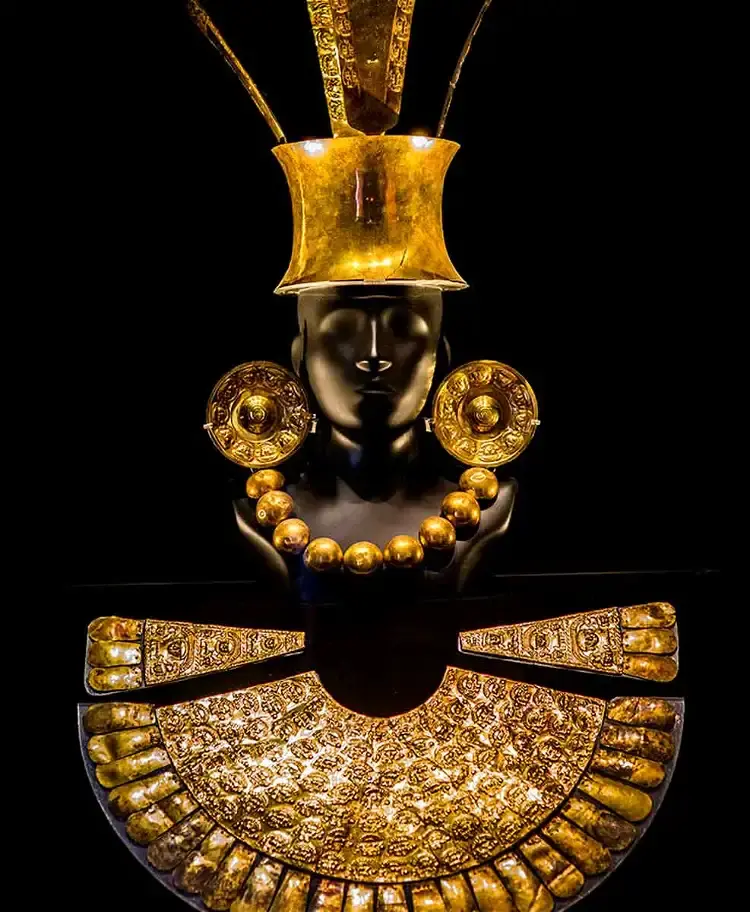 Chimú Gold Funerary Attire, 12th–15th century, via Museo Larco
Chimú Gold Funerary Attire, 12th–15th century, via Museo Larco
Like many of the pre-Colombian civilizations of South America, the Chimú practiced ritualized human sacrifice as part of their religious culture, although very little is known about their belief systems. Close to their capital of Chan Chan archaeologists have uncovered the largest incident of child sacrifice currently known in the world: 269 children and over 400 llamas were sacrificed and carefully buried during a time of great flooding around 1400 CE.
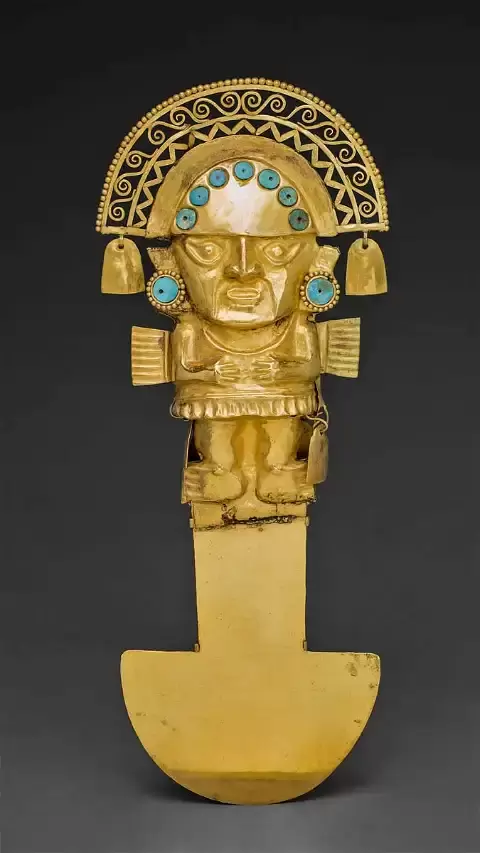 Chimu Ceremonial Knife, or Tumi, via The Art Institute Chicago
Chimu Ceremonial Knife, or Tumi, via The Art Institute Chicago
Whatever their reasons for this costly sacrifice, within sixty years, the Chimú were at war with the Inca, facing the expansionist Pachakutiq Inka Yupanki and his son, Tupaq Inka Yupanki, who succeeded him as Emperor in 1471CE. The Chimu did not submit easily but rebelled against the invading Inca. They ultimately lost and were forbidden from carrying weaponry as a result. The talented artisans of Chan Chan were forcibly relocated to Cuzsco, along with their finest pieces of work, which was also an effective way of limiting the Chimú’s access to wealth and status. They were never fully subdued, however, and their hatred of their Inca oppressors would ultimately be exploited by the Conquistadors.
5. The Chachapoya: The “Cloud People” Conquered by the Inca Empire
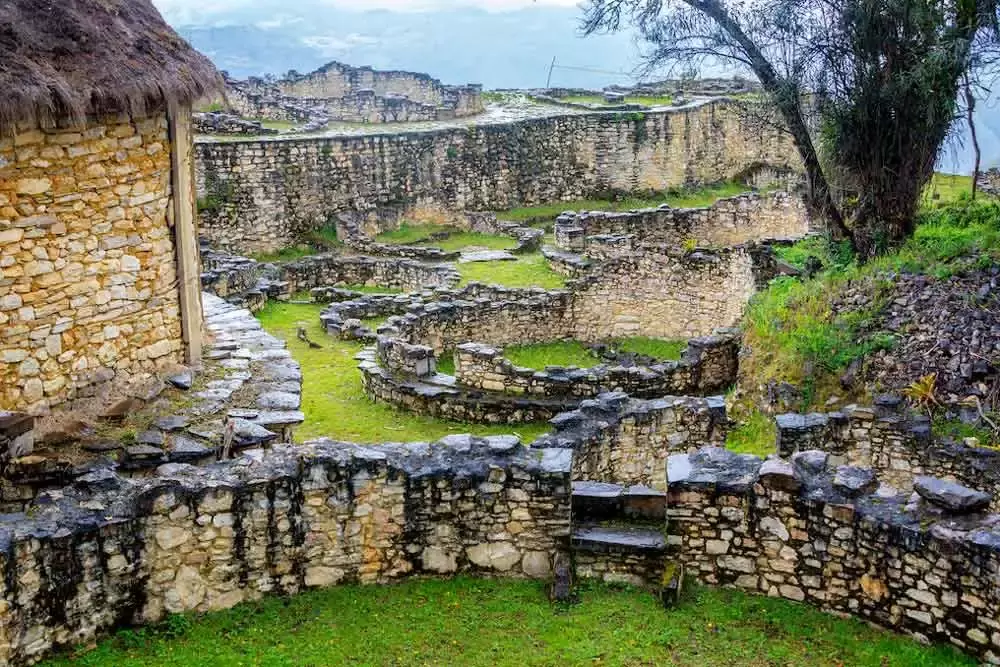 Remnants of round houses in Kuelap, ruined citadel city of the Chachapoyas cloud forest culture in mountains of northern Peru, via the World Monument Fund
Remnants of round houses in Kuelap, ruined citadel city of the Chachapoyas cloud forest culture in mountains of northern Peru, via the World Monument Fund
The Chachapoya lived in the North of Peru, and were known as “the Cloud People” by the Inca, due to their high mountain kingdom. We do know they emerged around the same time as the Chimu, and that their territory was marked by two tributary rivers of the Amazon.
The political center of the Chachapoya is believed to have been the mountain fortress of Kuelap, sometimes referred to as the Machu Piccu of the North. It is believed to have been home to almost 300,000 people at its peak made up of warriors, merchants, farmers and artisans. Demonstrating their formidable building skills, the Chachapoya surrounded their capital with a limestone wall that reached 60ft in height at some places and had only a narrow walkway for an entrance.
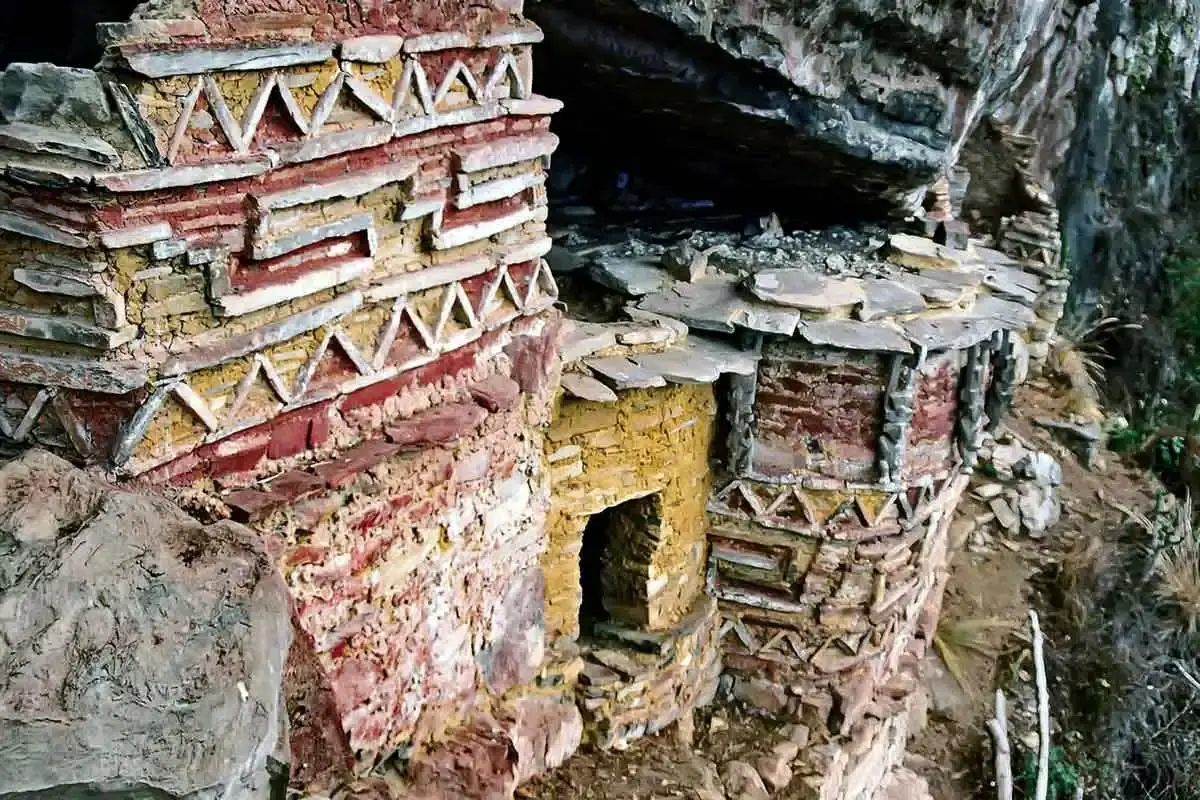 Pinchudos, or Chachapoya funerary monuments, at Gran pajaten, via Pueblos Originarios
Pinchudos, or Chachapoya funerary monuments, at Gran pajaten, via Pueblos Originarios
The Chachapoya culture left archaeological remains quite unlike their southern neighbors, possibly due to the very different climate and landscape they lived in. Their houses were round and had conical straw roofs that make them stand apart from the architectural style of the Inca. Many of their settlements are built in high, inaccessible places, suggestive of defensive structures.
 Ruins of Kuelap, Chachapoya culture, Peru via Peru Travel
Ruins of Kuelap, Chachapoya culture, Peru via Peru Travel
However, it is not architecture that the Chachapoya are known for but rather their unique brand of ancestor worship. While mummification as a funerary right was common across many South American cultures, the Chachapoya did not live in arid deserts, but rather high-humidity mountains and jungles, meaning they developed different techniques to their counterparts. Their mummified ancestors, or mummy bundles, are still found to this day as new sites are uncovered by archaeologists. The Chachapoyas entombed the mummified remains of their dead in purpose-built funerary towers or elaborate sarcophagi, such at the ones found at Karajia. This way the dead could be seen by the living, but the living could also be watched over by the dead. Many of these locations were dangerous to access or were, for all practical purposes, inaccessible to the average person, meaning that many have been preserved to this day.
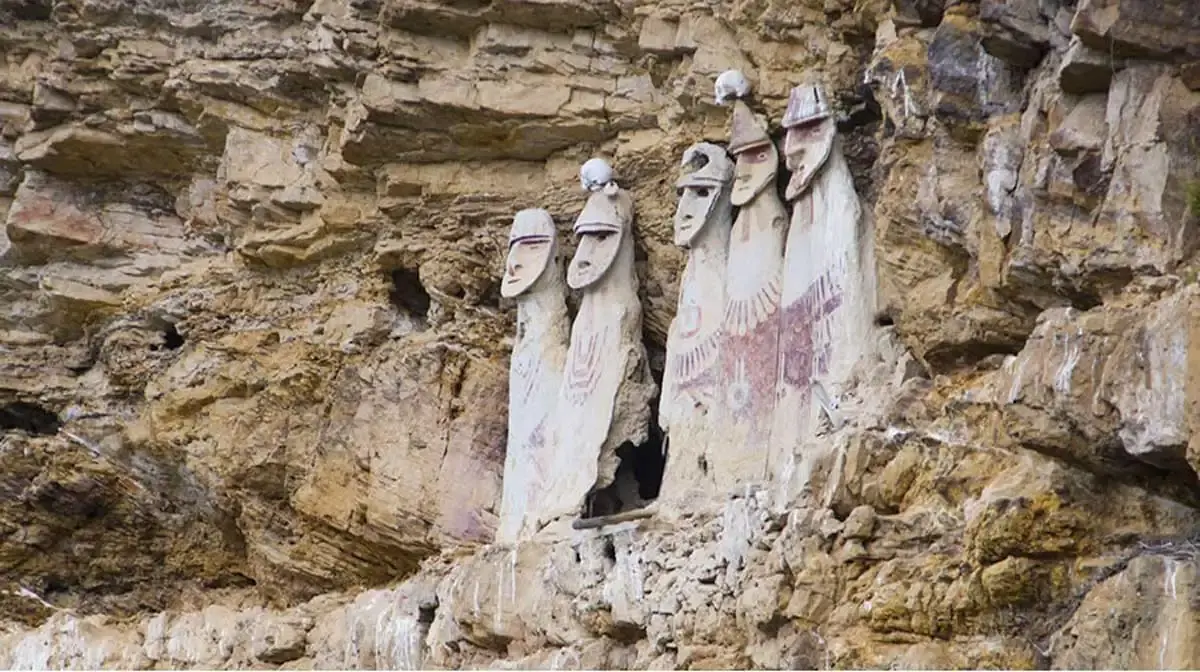 Chachapoya Sarcophagi of Karajía, via Peru.Info
Chachapoya Sarcophagi of Karajía, via Peru.Info
According to the chronicles of the Inca, the Chachapoya were not an easily conquered people. Known as “the Warriors of the Clouds”, the Chachapoya fought furiously against the Inca, and even once they were conquered, rebellion was common. It is estimated that the Inca were responsible for the deaths of almost 50% of their population. It’s not surprising, then, that they eventually allied with the Spanish against their former rulers, but ultimately they had only replaced one repressive regime with another, and soon disappeared from history leaving nothing but enigmatic ruins and funerary monuments to puzzle future generations.